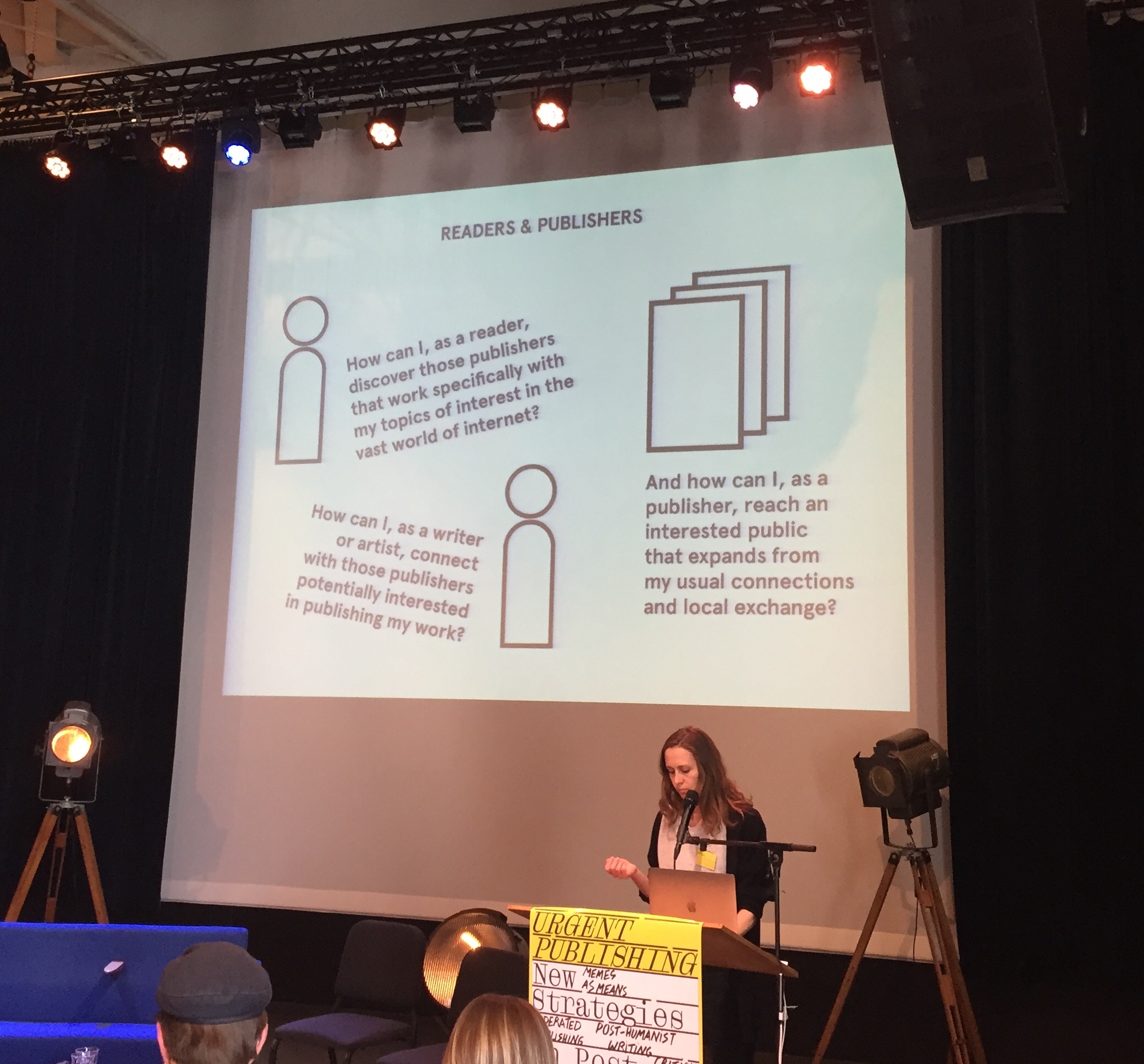
Photo:Cristina
As publishing professionals, we are always looking for new ways to ‘keep a publication alive’ post-production, as well as new ways to design for the sustainability of a publication. What can we do to prevent books from collecting dust on bookshelves? During the Urgent Publishing conference presentation The Afterlife of Publications Marc van Elburg, Krista Jantowski, Cristina Garriga and Karolien Buurman each show how they strive to keep their publications sustainable.

Photo:Cristina
Cristina Garriga explains that there is a need among artists and writers to know how publishers work and how to reach each other. Readers and publishers, an online directory for independent publishers tries to close this gap by giving a potential author a clear and concise idea of what the publisher stands for, what kind of books they publish and what their submission policies are. Connecting the right authors and audience to the right publisher can ensure the sustainability of the publication.
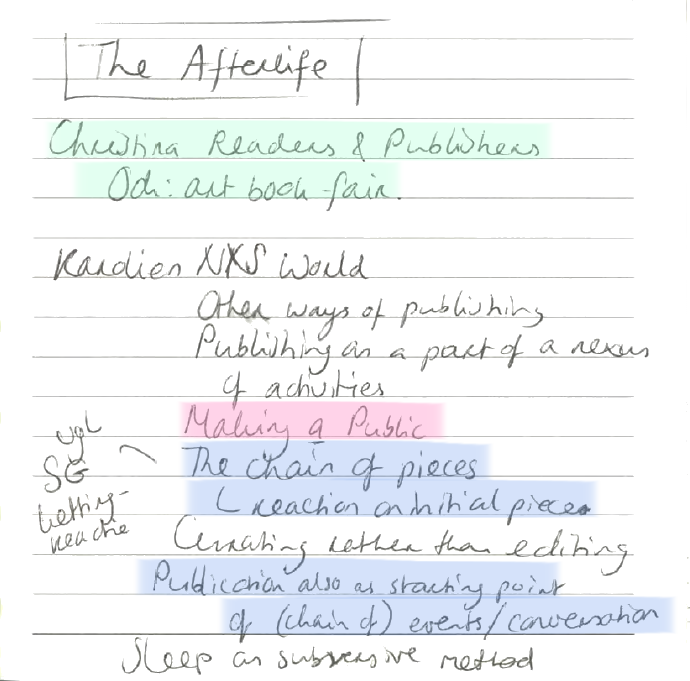
Notes:Miriam
For Karolien Buurman, the answer lies in collaborating and creating a community. She works for NXS, a collaborative research project that explores “the self” in the age of digital technology. NXS publishes twice a year. Each contributor responds and reflects on the work of another contributor. In addition to the publications, NXS hosts lectures, performances and exhibitions around the theme of the publication. In this way, they create a community that is much broader than their readership.
Mark van Elburg talked about the Zinedepo zinelibrary in Motel Spatie in Arnhem. He explained that the zine culture, particularly that of the 1990s, acted outside commercial consumerism culture, and therefore outside of convention. The zine culture was a close-knit community. One zinester might have included the names of several other zines on the same topic, and where to get them. Van Elburg referred to this as DIY culture.
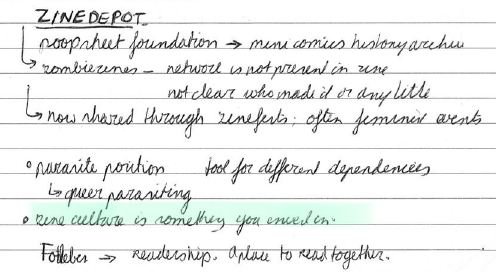
Notes:Kimmy
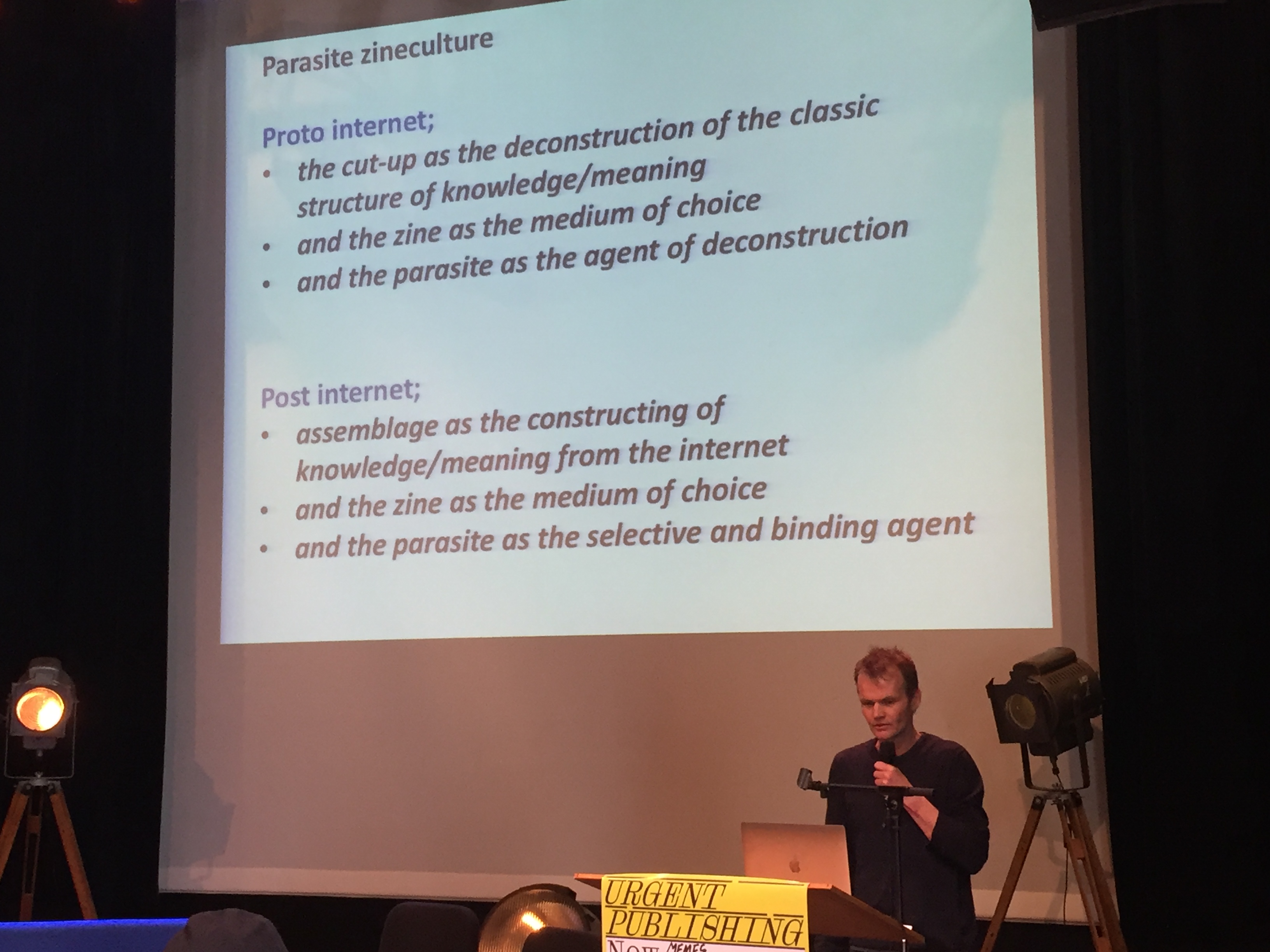
Photo:Marc
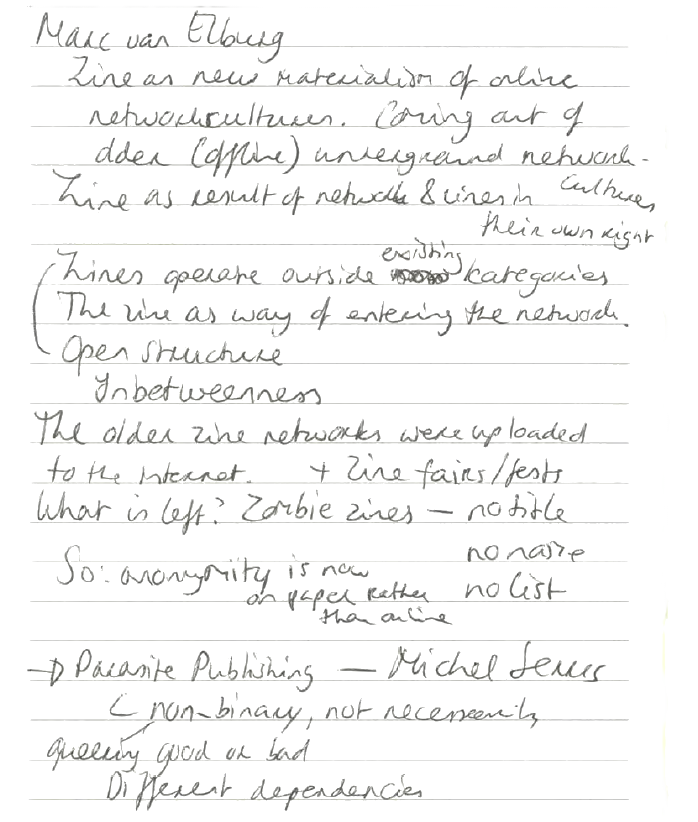
Notes:Miriam
Krista Jantowski of Walter Books in Arnhem explained the importance of the bookshop not just as a place of commerce or a temporary storage room for books, but as the starting point of the circulation of knowledge. Bookstores are places where communities can come together and share knowledge and opinions.
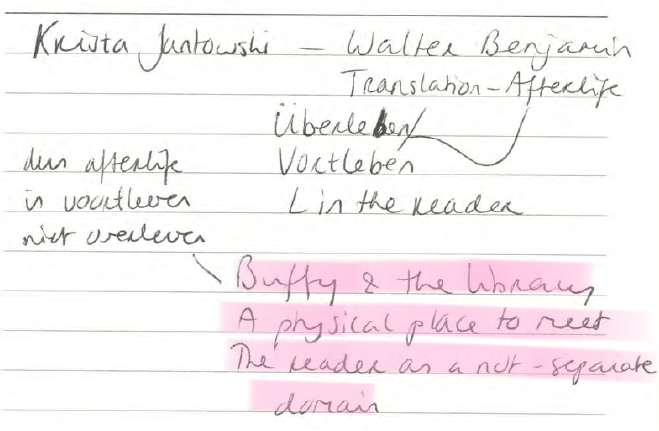
Notes:Miriam
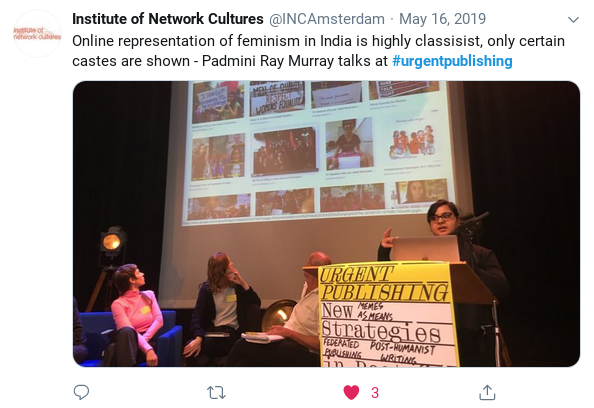
Tweet:INC
Each in their own way, the speakers highlighted that it is important for publishers to actively work towards bridging the gap between authors, readers and themselves, to build communities, to bring people together, and to collaborate within and outside of your own network. It is high time to stop looking at the book simply as a product. The speakers of The Afterlife of Publications have shown that the book, or any other publication, can serve as a catalyst for connection in the ‘post-truth’ era.

Notes:Kimmy

Notes:Miriam

Tweet:Nikola
Displaced Editor's Note: Lorem Ipsum is simply dummy text of the printing and typesetting industry. Lorem Ipsum has been the industry's standard dummy text ever since the 1500s, when an unknown printer took a galley of type and scrambled it to make a type specimen book. It has survived not only five centuries, but also the leap into electronic typesetting, remaining essentially unchanged. It was popularised in the 1960s with the release of Letraset sheets containing Lorem Ipsum passages, and more recently with desktop publishing software like Aldus PageMaker including versions of Lorem Ipsum.

Notes:Kimmy

Notes:Kimmy

Notes:Kimmy
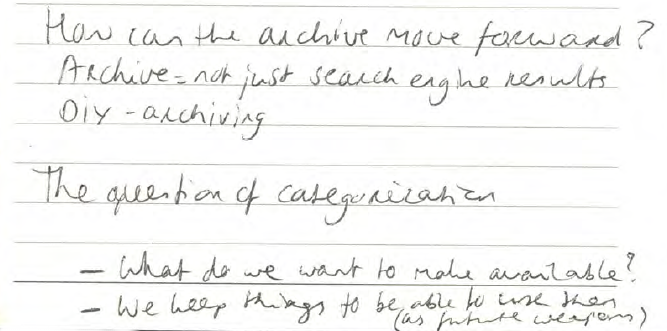
Notes:Miriam